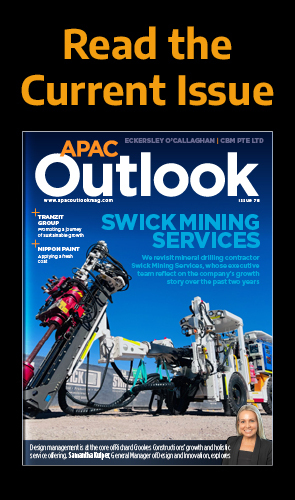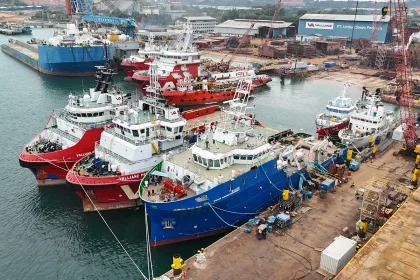Asia Outlook takes a closer look at the Philippines and profiles their business and investment potential.
The Philippines is one of the more dynamic markets in the global economy. Its general macro-economic outlook improved significantly in recent years and the country has made promising headway towards more sustainable and equitable economic development.
With an estimated population of 92.23 million, the country’s natural pool of talents and culturally adaptable human resources position the country as the most value-for-money destination for investments in the Asian region. The Philippines place high-value on education that equipped our labour force with world-renowned technical competency and English proficiency.
Bright spots in the economy include BPO, tourism, mining, agriculture, bio-fuels and renewable energy, and infrastructure. The Philippines is endowed with rich and diverse natural resources that provide seemingly unlimited opportunities.
With national economies and supply chains becoming more and more intertwined, the country strives to expand and strengthen international investment agreements with capital-exporting countries to safeguard investors against economic volatilities and hedge against risk.
The government is well aware of the need to focus on total investor-related solutions to nurture investments. Going from strength to strength, the country’s comprehensive strategy to attract capital inflows integrates secure and predictable economic conditions with business-friendly policies.
EXEMPLARY WORKFORCE
The Filipino workforce is one of the most compelling advantages the Philippines has over any other Asian country. With higher education priority, the literacy rate in the country is 94.6%, which is among the highest. English is taught in all schools, making the Philippines the third largest English-speaking country in the world. Every year, there are some 350,000 graduates enriching the professional pool.
In the IT service sector, Filipino workers are considered the new breed of world-class service professionals and are referred to as Global Knowledge Workers because they are intelligent and able to compete at the highest levels among the best in the world.
PRIME BUSINESS LOCATION
The Philippines is located right in the heart of Asia and today, it is the fastest growing region. It is located within four hours flying time from the major capitals of the region. Sited at the crossroads of the eastern and western business, it is a critical entry point to over 500 million people in the Association of Southeast Asian Nations (ASEAN) market, and a gateway of international shipping and air lanes suited for European and American businesses.
FIRST-CLASS LIFESTYLE
Discover the best of sun, sea, sand and style in the tropical setting, teeming with the best of western amenities. The Philippines is second home to expatriates who enjoy the company of the warmest people in the region, the country’s openness to varied cultures and a decidedly global outlook. Expats enjoy accessible and affordable luxuries such as business centres, housing, schools, hospitals, shopping malls, hotels and restaurants, beach resorts, and recreation centres.
ABUNDANT RESOURCES
An archipelago like the Philippines offers diverse natural resources, from land to marine to mineral resources. It is also the biggest copper producer in Southeast Asia and among the top ten producers of gold in the world. It is also home to 2,145 fish species, four times more than those found in the Bahamas. The 7,100 islands boast of beautiful beaches and breathtaking sceneries that offer soothing leisure and relaxation spots for vacationers and tourists.
LIBERALISED, BUSINESS-FRIENDLY ECONOMY
An open economy, like the Philippines, allows 100% foreign ownership in almost all sectors and supports a Build-Operate-Transfer (BOT) investment scheme that other Asian countries emulate. Government corporations are being privatised and the banking, insurance, shipping telecommunications, and power industries have been de-regulated. Incentive packages include the corporate income tax, reduced to a current 32%, with companies in the Special Economic Zones (ecozones) subject to only 5% overall tax rates. Multinationals looking for regional headquarters are entitled to incentives such as tax exemptions and tax and duty-free importation of specific equipment and materials.
UNLIMITED BUSINESS OPPORTUNITIES
Asian economies integrate within the vast framework of the ASEAN Free Trade Agreement (AFTA), the Philippines is the natural and most strategic location for firms that want access to the large ASEAN market and its vast trade opportunities. The Philippines has enhanced and primed up various areas for investors and offers a dynamic consumer market accustomed to an array of product choices created by a competitive domestic economy.
DEVELOPING INFRASTRUCTURE FOR GLOBAL GROWTH
A well-developed communication, transportation, business, and economic infrastructure links the three major islands – Luzon, Visayas, and Mindanao – and distinguishes the Philippine economy. Highly accessible by air, water, and cyberspace, liberalisation of inter-island shipping and domestic aviation further sparked improved facilities and services. The container terminals are suited to handle cargo traffic at the highest levels of efficiency.
MINING AND MINERAL PROCESSING
The Philippines is situated along a well-defined belt of volcanoes called the Circum-Pacific Rim of Fire where the processes of volcanism and plate convergence resulted in the formation of abundant and important metallic mineral deposits.
It is considered one of the countries that are richly endowed with metallic resources and it has the potential to be among the top ten largest mining powers in the world. The presence of major foreign mining companies such as Anglo-American, BHP Billiton, Sumitomo Mining and Xstrata attests to the attractiveness of mining in the Philippines.
PHARMACEUTICALS
The Philippine pharmaceutical market was valued at US$2.51 Billion in 2008, and reached US$3.2 billion in 2013. In terms of the overall market this is comparable to Pakistan and Thailand, and in terms of per capita, it is similar to China and Iran. The Philippines is continuously ranked as the 11th most attractive pharmaceutical market in the Asia-Pacific region, and the third biggest market in ASEAN after Indonesia and Thailand.
Fourteen (14) of the Top 20 pharmaceutical companies in the world have manufacturing facilities in the Philippines. The share of local manufacturers in the drug market is seen to rise to 38% and will likely continue to expand through 2010 and beyond. Multinational drug companies are expected to grow by 4% in 2009.
SHIP BUILDING
Shipbuilding is now shifting to Asia and the Philippines, which specialises in production, will likely exceed market shares of the traditional shipbuilding nations. The Philippines is the fourth largest shipbuilder, next to Korea, China and Japan. The arrival of foreign shipbuilders in the Philippines propelled the export growth of Philippine-made ships in the international market.
After being recognised as the fourth largest shipbuilder in the world, shipyards established in the Philippines are now building more ships of larger tonnage capacities like bulk carriers, container ships and passenger ferries. The construction of 180,000-DWT commercial ship by Hanjin Heavy Industries Corporation, a South Korean shipbuilding giant, shows that the Philippines can really build world-class vessels.
With a good management and skilled human resource matched with capital, technology and global market opportunities, the industry is moving forward to make the Philippines one of the largest shipbuilding nation in the world in the next five to ten years.
FINANCE
The Philippines is the undisputed Offshoring Destination of the Year as recognised by the UK’s National Outsourcing Association for 2007, 2009 and 2010. IT and BPO revenues reached $9.0 billion in 2010 which is equivalent to 8% of the total offshore BPO market, next only to India.
The industry has relatively high competence and maturity in Finance & Accounting and other back office services. IBM’s Global Locations Trend Annual Report (October 2010) named the Philippines as the world leader in business support functions like share services and BPO. The report said the country offered similarly attractive business environment for international business support functions as India’s but unlike the latter’s BPO hot spots.
The value proposition is anchored on the ability to provide scale, efficiency and talent while enabling superior services to the end customer. The Philippines is a world class destination for Shared Services with banking giants like HSBC Citibank, JPMorgan Chase, Macquarie Bank and Deutsche Bank as locators.
ANIMATION
With a long-standing history in animation services and a strong cultural affinity with Western countries, US companies specifically, have long preferred the Philippines as an outsourcing destination when it comes to animation; in film, television, video games and other applications. The country is considered to have a first mover advantage in the Asian region. Filipino animators have worked on popular cartoons and animated films such as: Addams Family, Captain Planet, Dragon Ball Z, Finding Nemo, The Incredibles, The Jetsons, The Mask, Scooby-Doo, and Tom & Jerry. Entertainment companies such as Hannah-Barbera, Marvel Comics, Walt Disney, and Warner Brothers has outsourced many projects to Philippine-based animation companies.
Animation outsourcing also applies to creating graphics for the video game industry, an industry that was valued at US$ 25.1 billion in 2010. Filipino animators have worked on games for the following gaming platforms: Nintendo, Sega, Game Boy and Sony Playstation.
GAME DEVELOPMENT
Filipinos are ideal game developers due to their affinity with the US in terms of education, media and sports; and with Japan in terms of animation and video entertainment. In 2006, the Game Developers Association of the Philippines (GDAP) formed to gain better leverage for the industry.
GDAP was founded by a collaboration of six companies with solid experience in software development and animation. Most were Small and Medium Enterprises (SMEs) and start-up companies formed by young and enthusiastic professionals. Today, GDAP counts 13 members albeit 27 more companies are operating outside the association. Revenue for the sector reached almost US$5 Million in 2009 or 50% growth year-on-year, with 90% of revenue made from the foreign games market.
For further information, visit: www.investph.org




































